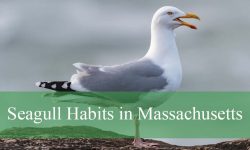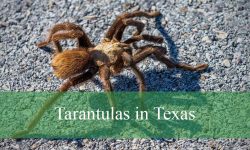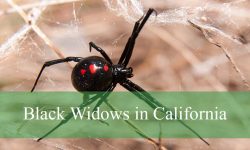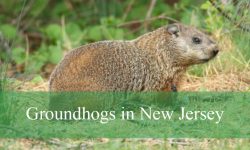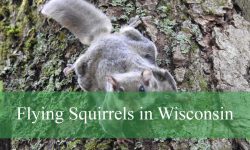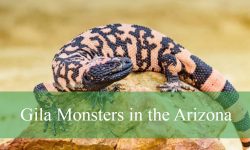Cottonmouths, also known as water moccasins, are among the most misunderstood reptiles living in Georgia’s wetlands, river bottoms, cypress swamps, and slow-moving streams. Their thick bodies, dark patterns, and famous open-mouth defensive display have given them a reputation far larger—and often far more dramatic—than reality. Yet beneath their intimidating appearance lies a surprisingly complex snake with specialized behaviors, semi-aquatic adaptations, and ecological roles that most Georgians never notice.
Georgia is one of the southeastern states where cottonmouths are native, particularly in the Coastal Plain stretching from Savannah to Valdosta, the Okefenokee Swamp, and the drainage systems of the Altamaha, Satilla, and Flint Rivers. Their distribution stops sharply at the Fall Line, meaning cottonmouths are not found naturally in North Georgia’s mountains or Piedmont uplands—though they are frequently mistaken for harmless watersnakes there.
From their feeding habits and sensory abilities to their moisture-driven movement patterns and rarely-known reproductive behaviors, cottonmouths are far more intricate than the myths surrounding them. Below are ten scientific, surprising, and little-known facts about cottonmouths in Georgia that highlight their ecological importance and biological depth.
1. Cottonmouths in Georgia Are True Semi-Aquatic Vipers
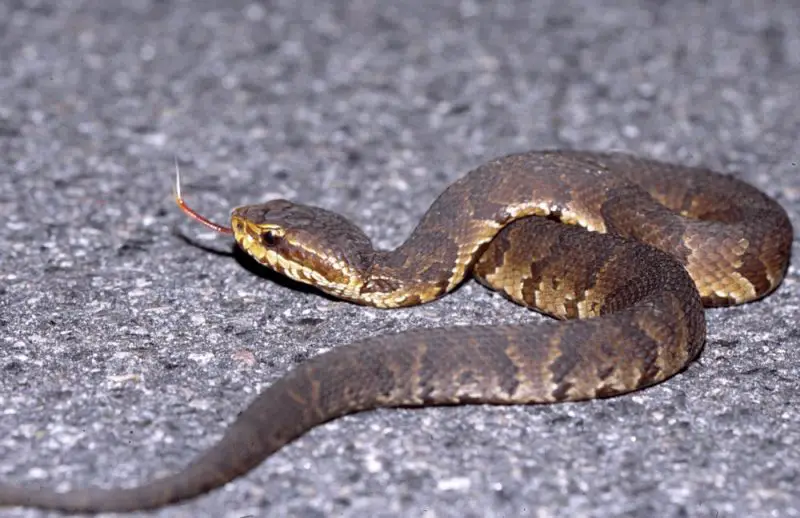
They Spend More Time in Water Than Most Venomous Snakes
Cottonmouths are one of the only venomous snakes in North America that comfortably swim across open water. In Georgia’s swamps and blackwater rivers, they glide effortlessly using serpentine waves generated mostly in the tail.
This aquatic ability allows them to hunt, thermoregulate, and escape predators with ease.
They can remain partially submerged for long periods while scanning the shoreline.
Their Bodies Are Built for Aquatic Life
Cottonmouths have slightly flattened bodies that improve buoyancy, helping them float high on the water’s surface. Their nostrils sit high on the snout, allowing them to breathe while most of the body stays submerged.
This design suits the warm, stagnant waters of southern Georgia.
They also shed water quickly due to their scale structure.
They Roam Widely Between Wetlands
During rainy seasons, cottonmouths travel between ponds, sloughs, and creeks. Heavy Georgia downpours often trigger movement, allowing them to reach new feeding areas.
Rain-driven dispersal is common around the Okefenokee and Altamaha basins.
Their mobility surprises many people who assume they stay in one site.
2. Georgia Cottonmouths Are Frequently Confused With Watersnakes
Harmless Watersnakes Often Mimic Cottonmouth Behavior
Northern and banded watersnakes flatten their bodies, open their mouths, and vibrate their tails—behaviors easily mistaken for a cottonmouth’s threat display. In murky Georgia water, this similarity causes many mistaken identifications.
Most “cottonmouth sightings” in North Georgia are actually watersnakes.
Misidentification is extremely common around the Chattahoochee and Etowah Rivers.
Cottonmouths Have Distinctive Facial and Body Features
Cottonmouths have blocky, triangular heads with a pronounced eye stripe, while watersnakes have narrow heads and round pupils. Cottonmouths also have heavier bodies with thicker necks.
These differences are more noticeable up close but easily confused at a distance.
Proper identification prevents unnecessary fear.
The Open-Mouth Display Is Not Always a Sign of Aggression
Cottonmouths show their white mouths as a warning, not a prelude to attack. Many watersnakes imitate this behavior out of fear.
The display evolved to prevent conflict—not initiate it.
Their goal is to be left alone, not to chase or strike.
3. Cottonmouth Venom Is Potent, but Bites Are Much Rarer Than People Think
Cottonmouths Prefer to Flee Whenever Possible
Despite their reputation, cottonmouths rarely bite humans. They often freeze or retreat into water when approached. Most defensive displays occur only when escape is blocked.
The “aggressive cottonmouth” myth persists despite decades of field research.
Most bites occur when someone steps on or tries to handle the snake.
Their Venom Is Designed for Subduing Prey
Cottonmouth venom contains hemotoxins and cytotoxins that break down tissue, disrupt blood flow, and immobilize prey quickly. This venom helps them digest food efficiently in warm, humid climates.
Their venom is powerful but specialized for small animals.
Human envenomation requires medical attention but is treatable.
Dry Bites Are Possible
Cottonmouths sometimes deliver defensive bites with little venom. This behavior allows them to conserve venom for hunting.
Dry bites reflect intelligent resource management.
Venom is valuable, so snakes use it carefully.
4. Cottonmouths Have Unique Feeding Strategies in Georgia’s Wetlands
They Eat a Wide Range of Aquatic and Terrestrial Prey
Their diet includes fish, frogs, salamanders, small mammals, birds, turtles, and other snakes. They also scavenge fish kills after storms—making them important cleanup predators.
Their opportunistic feeding benefits wetland ecosystems.
They consume both live prey and carrion.
Fishing Techniques Are Surprisingly Sophisticated
Cottonmouths sometimes use their tail as a lure, wiggling it to attract curious fish or amphibians. This behavior is more common around slow-moving blackwater creeks.
The tail lure resembles a small worm.
This hunting tactic increases success in murky water.
They Frequently Hunt at Night
Warm Georgia nights provide ideal conditions for foraging. Cottonmouths move slowly along pond edges, using heat-sensing pits to locate prey hidden beneath vegetation.
Night activity reduces competition with diurnal predators.
Their sensory abilities make them efficient nocturnal hunters.
5. Their Heat-Sensing Pits Act Like Natural Infrared Sensors
They Detect Warm-Blooded Prey in Total Darkness
Cottonmouths have heat-sensitive pits between the eye and nostril. These pits detect temperature differences as subtle as fractions of a degree.
This adaptation allows precise targeting at night.
Their infrared capability is crucial for survival in dense wetland cover.
They Use Heat Sensing for Navigation
Heat signatures from the ground, tree roots, and surrounding vegetation help them interpret terrain during nocturnal movement.
The pits act as secondary spatial guides.
This system helps them avoid obstacles and predators.
Their Pits Make Them Highly Effective Ambush Predators
Cottonmouths often remain motionless, waiting for prey to come within striking distance. Heat detection reduces wasted energy on unsuccessful strikes.
Ambush hunting saves energy in calorically sparse wetlands.
Their sensory biology supports low-risk predation.
6. Cottonmouth Behavior Changes with Georgia’s Seasonal Climate
Warm Summers Increase Activity Near Water
During peak heat, cottonmouths remain near cool water bodies. They bask briefly in the morning and evening to regulate body temperature.
Midday heat forces them into shade or water.
Their daily rhythm mirrors Georgia’s temperature patterns.
Winter Brumation Occurs in Dry, Sheltered Areas
Even though winters in southern Georgia are mild, cottonmouths still undergo brumation—slowed metabolism and reduced movement. They often share underground refuges with copperheads or ratsnakes.
Brumation begins in late fall and ends early spring.
Their winter behavior is largely hidden from public view.
Rainfall Strongly Affects Their Movement
Heavy rains trigger mass movement across roads and fields, especially in late spring. Rising water levels may force cottonmouths to relocate.
Movement peaks following thunderstorms in the Coastal Plain.
Their dispersal reflects hydrothermal conditions.
7. Cottonmouths in Georgia Rarely Travel Far From Water—But It Happens
Their Core Habitat Is Always Wetland-Connected
Cottonmouths spend most of their lives near ponds, marshes, rivers, or swamps. However, they can occasionally be found in drier uplands following prey trails or rain-driven dispersal.
Distance from water increases during breeding season.
Movement patterns vary by age and sex.
Young Cottonmouths Sometimes Wander Farther
Juveniles disperse more aggressively than adults to avoid competition. These young snakes may temporarily appear in forests or farmland miles from major wetlands.
Their wandering helps maintain genetic diversity.
Most eventually settle close to water.
Adults Maintain Stable Home Ranges
Cottonmouths establish small territories where food and shelter are abundant. Mature snakes often remain within a few hundred yards of a central water source.
Their stable home range supports predictable behavior.
They are not wide-roaming snakes like racers or kingsnakes.
8. Cottonmouth Reproduction Is Highly Specialized
Mating Peaks in Late Spring
Males seek receptive females along wetland edges and riverbanks. Courtship involves tongue-flicking, body alignment, and sometimes wrestling between rival males.
Breeding success relies on territory quality.
Mating timing aligns with Georgia’s seasonal cycles.
Females Give Birth to Live Young
Unlike many snakes that lay eggs, cottonmouths are ovoviviparous—females give birth to fully-formed babies in late summer or early fall.
Litters typically include 6–12 neonates.
Live birth increases survival in damp, unstable environments.
Neonates Have Bright Tail Tips
Young cottonmouths have yellow or green-tipped tails used as lures to catch small frogs or insects.
This juvenile lure is an effective hunting adaptation.
The bright tip fades as they mature.
9. Cottonmouths Play a Vital Role in Georgia’s Wetland Ecosystems
They Help Control Overabundant Prey
Cottonmouths regulate frog, fish, rodent, and small snake populations. This ecological function maintains balance in wetland communities.
Their predatory role prevents population explosions.
They are integral to food web stability.
They Serve as Prey Themselves
Great blue herons, egrets, hawks, otters, and even alligators prey on cottonmouths. Despite their venom, they are not apex predators.
Predation maintains natural population levels.
Their presence supports predator diversity.
They Clean Up Dead Fish and Amphibians
Cottonmouths frequently scavenge storm-killed or stranded animals, helping remove decaying material from the ecosystem.
This scavenging reduces disease spread.
Their diet makes them essential wetland recyclers.
10. Cottonmouth Myths Persist in Georgia—but Science Says Otherwise
They Do Not Chase People
Cottonmouths may move toward humans only when trying to reach water, escape cover, or a known refuge. Their behavior is often misinterpreted.
They rarely show aggression unless cornered.
Most “attacks” are misunderstandings.
They Are Not Found in North Georgia
Reports in the mountains or Piedmont are almost always misidentified watersnakes.
Their true range is restricted to the Coastal Plain.
Geography limits cottonmouth distribution sharply.
They Are Not Looking for Conflict
Cottonmouths display their signature white mouth to avoid confrontation. The behavior is defensive—not offensive.
Their warning system is highly effective for survival.
Myths overshadow the species’ true nature.
FAQs About Cottonmouths in Georgia
Are cottonmouths dangerous?
Their venom is potent, but bites are rare and avoidable.
Where in Georgia do cottonmouths live?
Primarily the Coastal Plain—southern and southeastern Georgia, including swamps and river systems.
Do cottonmouths chase people?
No. This is a myth.
How can you identify a cottonmouth?
Look for a thick body, blocky head, eye stripe, and heavy build.
Do cottonmouths eat fish?
Yes. Fish and amphibians form a major part of their diet.
Are cottonmouths active in winter?
They brumate but may emerge on warm days.
Do juveniles look different?
Yes. Young cottonmouths have bright tail tips.
Are cottonmouths protected in Georgia?
They are not endangered but are protected from unnecessary killing.
Conclusion
Cottonmouths in Georgia are far more fascinating than their ominous reputation suggests. Their unique semi-aquatic lifestyle, heat-sensing abilities, seasonal movements, scavenging habits, and ecological importance reveal a species deeply tied to Georgia’s wetlands. These ten surprising characteristics showcase a reptile adapted to complex environments and misunderstood by many observers. Understanding cottonmouth behavior helps reduce fear, promote coexistence, and highlight the ecological value of Georgia’s swamp-dwelling vipers.

